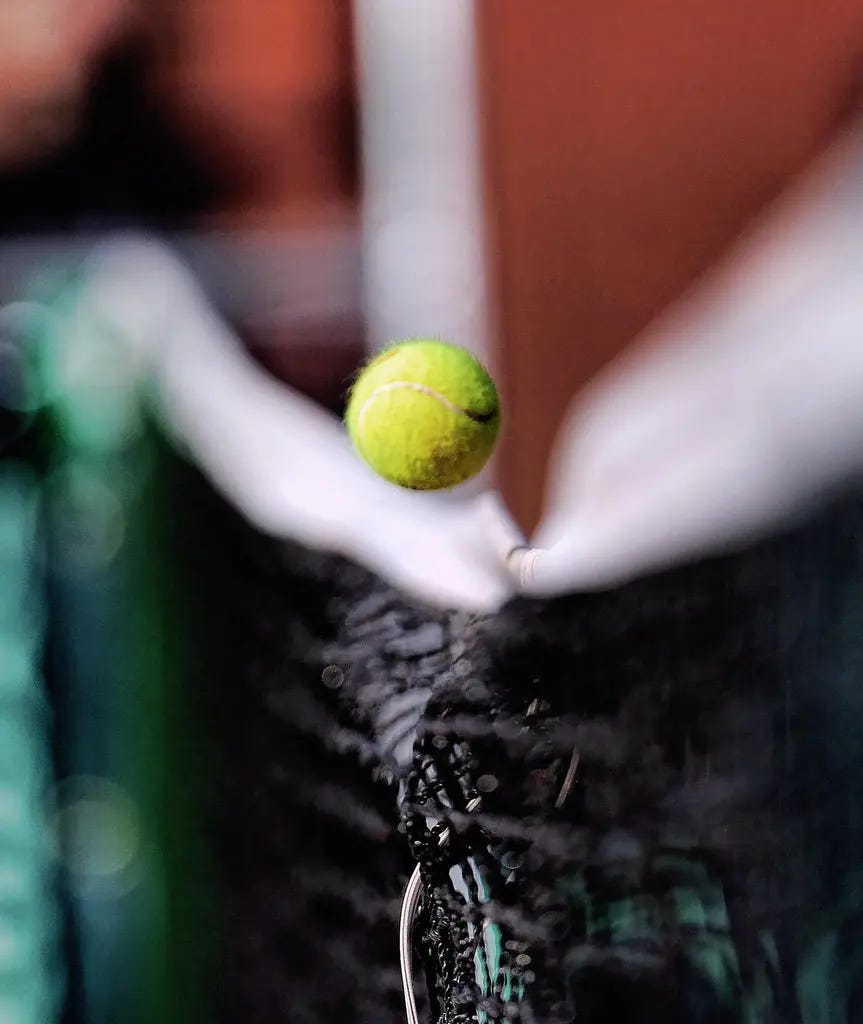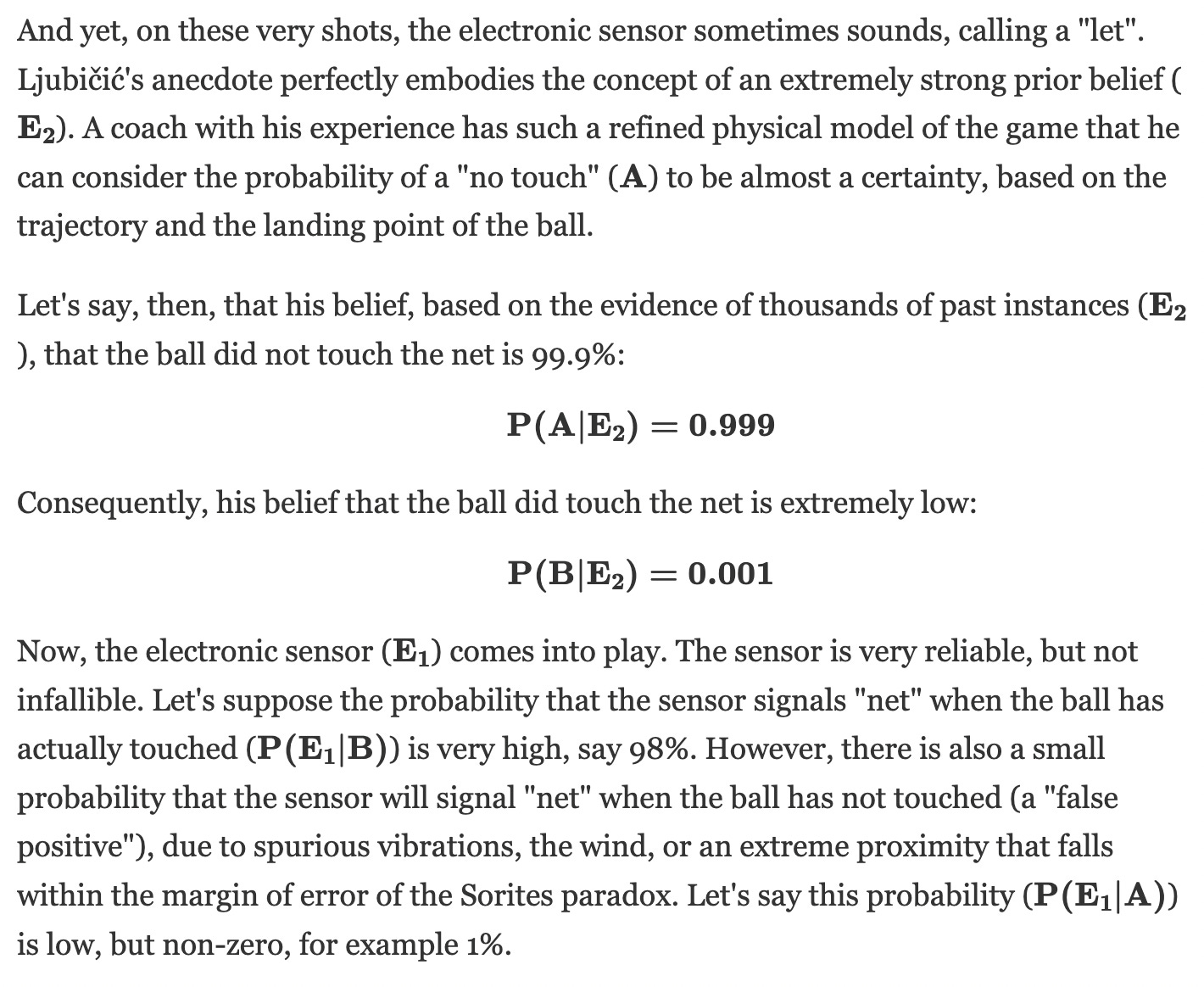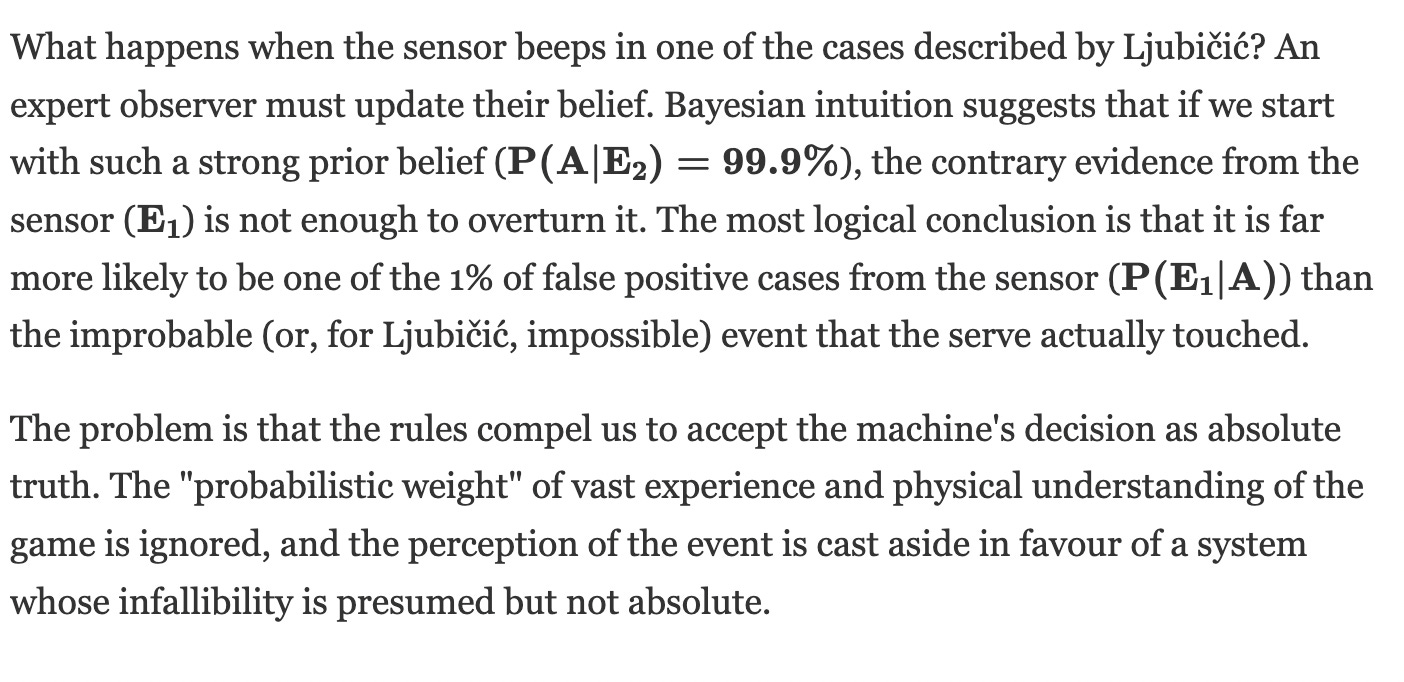A Heap of Lets.
A Bayesian and Philosophical Reading of the Automatic Net Detector
The introduction of technology in tennis, from the Hawk-Eye system to the automatic net cord detector (the "net" sensor), has the stated aim of eliminating human error and ensuring greater fairness. While the debate over Hawk-Eye, especially on clay, focuses on a conflict between physical evidence (the mark) and virtual processing, the net sensor opens up an even more subtle and philosophical debate. It challenges us not only on precision, but on the very definition of a "touch" and how our belief, based on experience, clashes with the binary decision of a machine.
How the Net Sensor Works and the Sorites Paradox
The automatic "net" system is typically based on vibration sensors or highly sensitive microphones mounted directly onto the net tape. These devices are calibrated to detect the specific frequencies or vibrations produced by the impact of a tennis ball. When a signal is detected that exceeds a certain threshold, the system emits its characteristic "beep", signalling a "let" and requiring the serve to be replayed.
This immediately gives rise to a philosophical problem known as the Sorites paradox (from the Greek soros, meaning "heap"). The paradox asks: if you have a heap of sand and remove one grain at a time, when does it cease to be a heap? No single grain makes the difference. Similarly, we can ask: when is a touch a "touch"?
A ball that passes a centimetre from the net does not touch it. A ball that clearly impacts the net does touch it. But what about a ball that passes so close that it displaces the air and causes a single fibre of the net to vibrate? Or one that just grazes the surface with the "fuzz" of the ball? There is a continuum of interactions between the ball and the net, ranging from "no contact" to "full contact". The sensor, by its nature, must draw a sharp, arbitrary line in this continuum and decide "yes" or "no". This transforms a gradual event into a binary decision, ignoring the potential physical insignificance of an infinitesimal contact.
Precision and Probability: A Bayesian Reading of the "Net"
The issue becomes even more interesting if we analyse it from a Bayesian perspective, which deals with how we update our beliefs in the light of new evidence.
Let us consider two possible events:
This is not a purely theoretical hypothesis, but a concrete observation expressed by leading figures in the world of tennis. For example, I once heard Ivan Ljubičić, former world No. 3, coach to Roger Federer and current technical director of the French Tennis Federation, point out this powerful, anecdotal fact: "there are serves, hit by a tall player that land in a specific part of the service box with a certain spin, for which," according to his vast experience, "it is not physically and geometrically possible for the ball to touch the net".
In the Spirit of the Game: Perfection vs. Physical Relevance
This leads us to question the "spirit of the game", in a way that is analogous to the Hawk-Eye issue.
The Relevance of the Touch: The "let" rule exists because a touch of the net can significantly alter the trajectory and speed of the ball, creating a disadvantage for the receiver. But if a touch is so infinitesimal (the "grain of sand" of the Sorites paradox) that it has no discernible effect on the ball's path, is calling it a "let" still in keeping with the spirit of the rule? Technology, in its quest for absolute precision, may end up punishing physically irrelevant events, transforming the rule from a mechanism of fairness into an exercise in technological pedantry.
Blind Reliance on the Machine: Unlike a dubious line call, where the human eye (of the umpire or players) still has its own perception, a touch on the net is often invisible and inaudible. This means there is no possibility of appeal or contextual human judgement. We are obliged to trust a "black box" completely. This alters the nature of the game, which has always been a dialogue between the players' actions and the human interpretation of the rules in a physical context.
The debate over the automatic net sensor is perhaps even more profound than that over Hawk-Eye it self . It calls into question not only precision, but the very definition of what we are measuring. The Sorites paradox shows us that the notion of a "touch" is not binary but gradual, while the Bayesian reading highlights how an expert athlete's strong prior belief can conflict with the decision of an imperfect sensor.
Perhaps, instead of pursuing millimetric perfection that also detects physically irrelevant touches, we should ask ourselves if the technology ought to be recalibrated to align better with the spirit of the rule: to ensure fairness in the face of events that actually alter the game, rather than chasing a "technological truth" that risks losing touch with the physical reality of the court.





